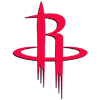From 2022-23, among pitchers to throw at least 200 innings, only Spencer Strider, Shohei Ohtani and Blake Snell had a better strikeout rate than Hunter Greene's 30.7 percent mark. If you used a draft pick on Greene heading into the 2024 season, you did so with the knowledge that he was sure to be a big help in the strikeout department, but everything else was less certain.
Well, Greene's strikeout rate actually went down three percentage points in 2024 to a still-great 27.7 percent. The velocity on his four-seamer (98.3 mph to 97.6 mph) and slider (87.3 mph to 86.8 mph) was down a bit, too. And yet, Greene's results were better than ever. How did he pull it off? And is it sustainable?
First, I should note that Greene has mentioned off-the-field changes that he made starting last offseason which included alterations to his throwing and recovery programs as well as mental preparations in between starts. Reds pitching coach Derek Johnson has referenced the changes as well, noting that developing a consistent routine was a key to Greene's success in 2024. It's the kind of thing that's impossible to quantify but can be integral in a pitcher taking a step forward as Greene did this past season.
In terms of changes that can be measured, Greene made some adjustments to his pitch mix. After throwing his slider more than 40 percent of the time in 2022 and 2023, that usage rate dropped to 34.6 percent in 2024.
From 2022-23, among pitchers to throw at least 200 innings, only Spencer Strider, Shohei Ohtani and Blake Snell had a better strikeout rate than Hunter Greene's 30.7 percent mark. If you used a draft pick on Greene heading into the 2024 season, you did so with the knowledge that he was sure to be a big help in the strikeout department, but everything else was less certain.
Well, Greene's strikeout rate actually went down three percentage points in 2024 to a still-great 27.7 percent. The velocity on his four-seamer (98.3 mph to 97.6 mph) and slider (87.3 mph to 86.8 mph) was down a bit, too. And yet, Greene's results were better than ever. How did he pull it off? And is it sustainable?
First, I should note that Greene has mentioned off-the-field changes that he made starting last offseason which included alterations to his throwing and recovery programs as well as mental preparations in between starts. Reds pitching coach Derek Johnson has referenced the changes as well, noting that developing a consistent routine was a key to Greene's success in 2024. It's the kind of thing that's impossible to quantify but can be integral in a pitcher taking a step forward as Greene did this past season.
In terms of changes that can be measured, Greene made some adjustments to his pitch mix. After throwing his slider more than 40 percent of the time in 2022 and 2023, that usage rate dropped to 34.6 percent in 2024. The pitch remained effective, netting a plus-5 in terms of Baseball Savant's Run Values while producing a .356 xwOBA and 39 percent whiff rate. Opposing batters had just an 82.5 mph exit velocity against Greene's slider in 2024, down considerably from 87.1 mph in 2022 and 86 mph in 2023.
Greene had a seldom-used changeup as his third pitch both in 2022 and 2023, using the offering only 5.3 percent of the time each year. He completely scrapped the pitch in 2024, adding a splitter (8.3 percent) and curveball (1.8 percent) to take its place. While the curveball was barely used and got poor results, the splitter has the makings of a legitimate third pitch for Greene.
Greene threw 214 splitters last season and didn't surrender a single home run on the pitch. The offering also produced an elite xwOBA of .224, better than that of his four-seamer (.285) and slider (.256). Greene's splitter was particularly effective against left-handed batters, with the usage rate ticking up to 12.4 percent while producing a .208 xwOBA. In the aforementioned article, Johnson noted that while Greene's splitter is "still a little inconsistent," it is "an easy pitch to dream on." Further refinement as Greene becomes more comfortable with the offering could make it really nasty.
While the splitter was a nice addition to Greene's repertoire, the improvement with his four-seamer probably deserves the most credit for his breakout. Despite its premium velocity, Greene's four-seamer was not a great pitch for him in his first two seasons. Check out Greene's advancement on the pitch in terms of Run Value:
Only Cade Smith at plus-28 had a better Run Value with his four-seamer than Greene this season. And that's after the pitch produced a combined negative-17 Run Value over the previous two campaigns.
If you still need more convincing, take a gander at the chart below representing in-zone wOBA against Greene's four-seamer from 2022-23:

And now, from 2024:

Greene's fastball was so easy to hit in his first two seasons in large part because his release point was so easy to pick up. So what did he do? He changed it!
A nearly five-inch change in horizontal release point meant a noticeable change in horizontal movement, as well, with the fastball moving less and the slider moving more.
Greene's locations didn't change much year-over-year, but the results, particularly with his heater, were markedly better. Time will tell whether he can keep hitting that new release point consistently and whether the opposition starts to see him better, but for now it looks to have been the driving force behind his ascension.
Greene is always going to have a built-in disadvantage with half his starts coming at Great American Ball Park, particularly as a flyball pitcher, and nine of the 12 home runs he surrendered last season came at his unfriendly confines. The dramatic improvement with the four-seamer translated over into a big drop in long balls, however. He allowed five home runs on his heater in 2024 after serving up a whopping 29 on the fastball over the previous two seasons. And that's even as he threw 234 more four-seamers than he ever had before.
We now must address the elephant in the room that is Greene's right elbow injury, which cost him nearly six weeks of action during the second half. It was classified as "only" inflammation, and Greene returned to make two starts down the stretch, giving up a total of just one run over seven innings while showing his usual velocity. That's a good sign, but it doesn't absolve him of injury risk.
Injuries have, unfortunately, been fairly common with the 25-year-old right-hander. He's already had Tommy John surgery, which caused him to miss much of 2018 and all of 2019 (he also didn't pitch at all in 2020 with the pandemic wiping out the minor-league season). Greene missed six weeks during the 2022 season with a sprained shoulder and two months in 2023 with a hip problem.
Is Greene any more of an injury risk for 2025 than any other pitcher? I think it's fair to say he is, and that's even before factoring in that guys that throw as hard as he does tend to get hurt more often.
Even with the ballpark and injury risk factored in, Greene's upside is virtually unlimited, particularly if the splitter can indeed prove to be a viable third weapon. The Reds will be looking to contend in 2025 with new manager Terry Francona at the helm, and Francona also happens to let his starters pitch deeper into games than most skippers. If he can manage to stay healthy, Greene should fly past his previous career high in wins (nine).
Greene's super-early NFBC ADP currently sits at 86.14, sandwiched in between Aaron Nola and Freddy Peralta among starting pitchers.





































